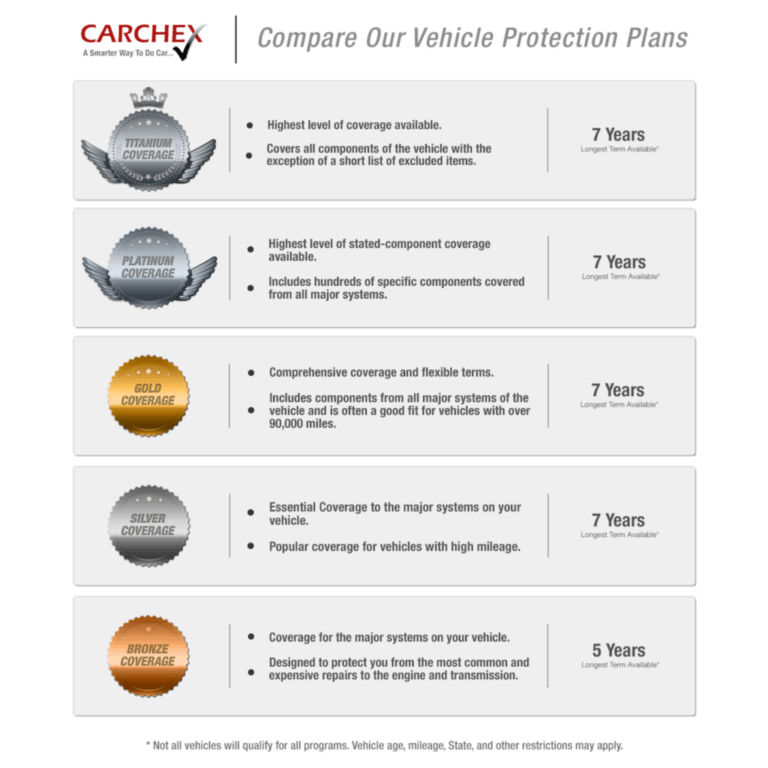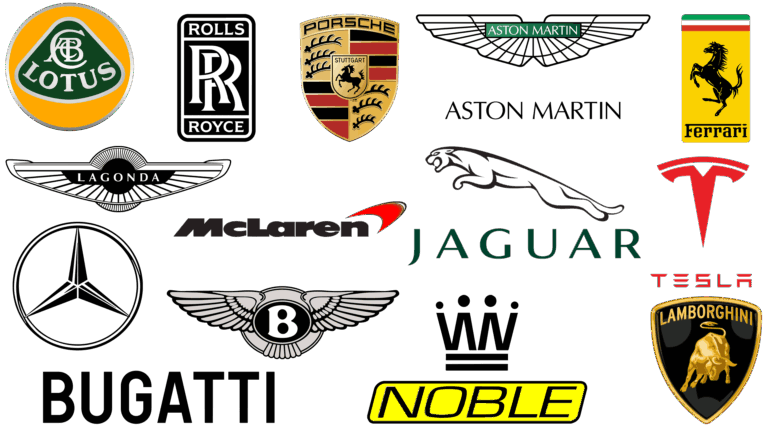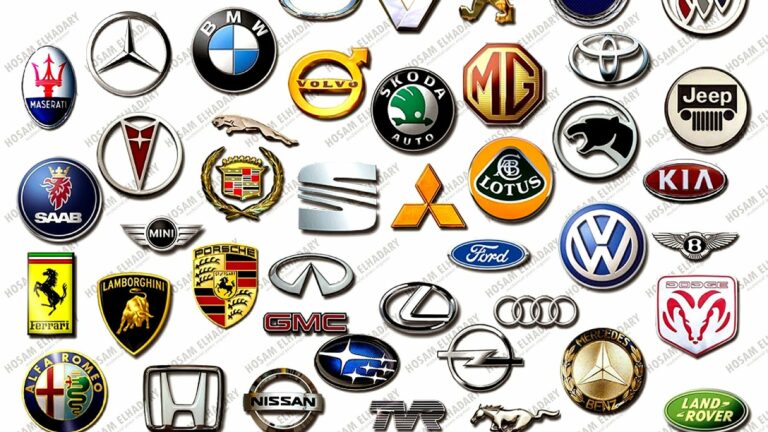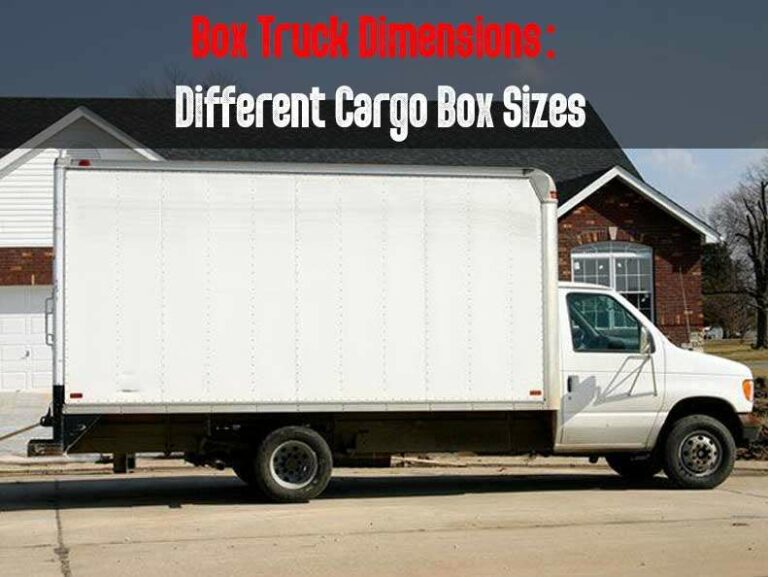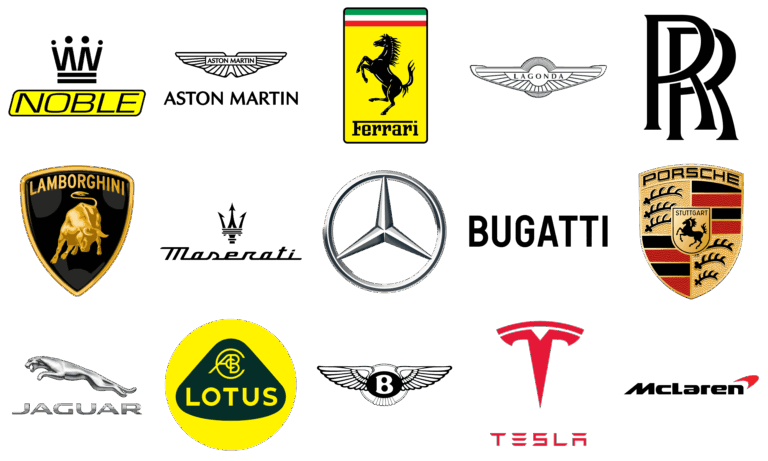Top Rated Car Speaker Brands: Elevate Your In-Car Audio Experience
Top Rated Car Speaker Brands: Elevate Your In-Car Audio Experience cars.truckstrend.com
In the symphony of daily life, the automobile often serves as our personal concert hall, a mobile sanctuary where music, podcasts, and audiobooks accompany us on every journey. Yet, for many, the stock audio system in their vehicle falls short, delivering a flat, uninspiring sound that detracts from the overall driving experience. This is where the magic of top-rated car speaker brands comes into play. Investing in quality car speakers isn’t just about making your music louder; it’s about transforming your vehicle into an immersive auditory environment, revealing nuances, depth, and clarity you never knew existed.
But with a vast ocean of options, how do you navigate the landscape of car audio to find the truly top-rated brands? This comprehensive guide will demystify the world of car speakers, highlight the industry’s leading players, and equip you with the knowledge to make an informed decision that will redefine your in-car sound.
Top Rated Car Speaker Brands: Elevate Your In-Car Audio Experience
Understanding Car Audio: Beyond Just Speakers
Before diving into specific brands, it’s crucial to understand that car speakers are a vital, but not singular, component of a complete car audio system. The overall sound quality is a culmination of several elements working in harmony:
- Head Unit (Receiver): The brain of your system, controlling inputs (radio, Bluetooth, USB), volume, and basic equalization.
- Amplifier: Boosts the low-level audio signals from the head unit to a powerful output capable of driving speakers. While many head units have built-in amps, external amplifiers provide significantly more power and cleaner sound.
- Speakers: The transducers that convert electrical signals into audible sound waves. They are the ultimate interface between your audio system and your ears.
- Subwoofer: A dedicated speaker designed to reproduce low-frequency sounds (bass) that standard speakers often struggle with.
- Wiring and Sound Deadening: Often overlooked, quality wiring ensures optimal signal transfer, while sound deadening material reduces road noise and vibrations, allowing your speakers to perform at their best.

While all these components contribute, speakers are arguably the most impactful upgrade for perceived sound quality, as they are the final stage of audio reproduction.
What Makes a Car Speaker "Top-Rated"? Key Considerations
Not all speakers are created equal. When evaluating car speaker brands and models, several critical factors differentiate the "top-rated" from the merely "adequate":
- Sound Quality: This is paramount. Top-rated speakers offer:
- Clarity: Crisp highs (treble), well-defined mid-range (vocals, instruments), and tight, controlled lows (bass).
- Imaging & Staging: The ability to create a realistic soundstage, making it feel like instruments and vocals are coming from specific points in front of you, rather than just from the speakers themselves.
- Frequency Response: The range of frequencies a speaker can reproduce (e.g., 20 Hz – 20 kHz). A wider and flatter response indicates more accurate sound reproduction.

- Durability and Build Quality: Car environments are harsh (temperature extremes, moisture, vibrations). Top brands use robust materials like rubber surrounds, durable cones (polypropylene, carbon fiber, silk), and sturdy baskets to ensure longevity.
- Power Handling (RMS vs. Peak):
- RMS (Root Mean Square) Power: The continuous power a speaker can handle reliably. This is the most important rating.
- Peak Power: The maximum power a speaker can handle for a brief moment. This number is less critical for sustained performance.
- Top-rated speakers have appropriate RMS power handling for their intended use, often matching well with aftermarket amplifiers.
- Sensitivity (Efficiency): Measured in dB (decibels), sensitivity indicates how efficiently a speaker converts power into sound. Higher sensitivity means the speaker will play louder with less power. This is crucial if you’re running speakers directly off your head unit without an external amplifier.
- Speaker Type:
- Coaxial (Full-Range) Speakers: All speaker components (woofer, tweeter, sometimes mid-range) are combined into a single unit. Easier to install and more affordable, they offer a good upgrade over stock.
- Component Speakers: Separate woofers, tweeters, and external crossovers. This allows for optimal placement of each driver, leading to superior sound imaging, clarity, and overall fidelity. They require more complex installation but deliver audiophile-grade sound.
- Brand Reputation and Customer Reviews: A long-standing history of innovation, positive customer feedback, and industry awards are strong indicators of a top-rated brand.
- Value for Money: While high-end speakers can be expensive, top-rated brands offer excellent performance across various price points, ensuring you get the best possible sound for your budget.

The Contenders: Top Rated Car Speaker Brands
Based on sound quality, durability, innovation, and market reputation, here are some of the most consistently top-rated car speaker brands that audio enthusiasts and casual listeners alike can rely on:
- Pioneer:
- Known For: Reliability, consistent performance, and excellent value across a wide range of products. Pioneer speakers often provide a significant upgrade over stock at an accessible price point. They offer both coaxial and component options.
- Typical User: Anyone looking for a solid, dependable upgrade without breaking the bank.
- JBL:
- Known For: Punchy bass, clear highs, and robust build quality. A long-standing name in audio, JBL speakers are popular for their vibrant sound signature and durability, especially their Club and GTO series.
- Typical User: Those who enjoy bass-heavy music and want a lively, dynamic sound.
- Infinity:
- Known For: Exceptional clarity, open soundstage, and high sensitivity. Part of the Harman International family (like JBL), Infinity speakers often feature their patented Plus One+ woofer cones for increased cone area and efficiency.
- Typical User: Listeners who prioritize clarity, detail, and efficiency, especially if running speakers off a factory head unit.
- Kicker:
- Known For: High power handling and impactful bass. Kicker lives up to its name, delivering powerful, aggressive sound ideal for rock, hip-hop, and electronic music. Their KS and CS series are popular choices.
- Typical User: Bass-heads and those who like their music loud and energetic.
- Rockford Fosgate:
- Known For: High-performance, durable, and powerful audio components. Rockford Fosgate offers speakers that can handle serious power, providing excellent clarity and strong bass, especially in their Punch and Power series.
- Typical User: Enthusiasts building a powerful system with external amplification.
- Focal:
- Known For: Audiophile-grade sound quality, exquisite detail, and premium build materials. Hailing from France, Focal speakers are considered high-end, offering unparalleled sound staging and accuracy for the discerning listener.
- Typical User: Serious audiophiles with a substantial budget who demand the absolute best in sound fidelity.
- JL Audio:
- Known For: Exceptional subwoofers, but their component and coaxial speakers are equally impressive, offering a balanced, natural, and detailed sound. JL Audio products are known for their engineering precision and sound accuracy.
- Typical User: Those seeking a premium, balanced sound signature and are willing to invest in quality.
- Hertz:
- Known For: European precision, incredible clarity, and dynamic range. Hertz speakers deliver a refined listening experience with excellent mid-range detail and crisp highs, making them a favorite among audiophiles.
- Typical User: Audiophiles who appreciate nuanced sound and detailed musical reproduction.
- Alpine:
- Known For: A comprehensive range of car audio products, from entry-level to high-end. Alpine speakers offer a balanced sound profile, good durability, and are often easy to integrate into various systems. Their Type-R and Type-S speakers are well-regarded.
- Typical User: Anyone looking for a reliable, well-rounded speaker solution, from simple upgrades to more complex setups.
- Kenwood:
- Known For: Solid performance and good value, similar to Pioneer. Kenwood speakers offer clear sound and decent bass response, making them a popular choice for budget-conscious upgrades.
- Typical User: Practical users seeking a noticeable improvement over factory speakers without a significant investment.
Choosing the Right Speakers for Your Car: A Practical Guide
Selecting the perfect speakers involves more than just picking a top brand; it’s about matching the speakers to your specific car, budget, and listening preferences.
- Assess Your Needs & Budget:
- What kind of music do you primarily listen to? (Bass-heavy, vocal-focused, classical?)
- What’s your ultimate goal? (Slight improvement, significant upgrade, audiophile experience?)
- How much are you willing to spend? Remember to factor in potential installation costs and additional components like amplifiers or sound deadening.
- Check Compatibility:
- Size: The most critical factor. Your car has specific speaker sizes (e.g., 6.5-inch, 6×9-inch, 5.25-inch) in various locations (doors, dash, rear deck). Consult your car’s manual, an online fitment guide (Crutchfield is excellent), or measure existing speakers.
- Impedance: Most car speakers are 4-ohm. Ensure compatibility with your head unit or amplifier.
- Mounting Depth: Aftermarket speakers can be deeper than factory ones. Ensure there’s enough clearance behind the mounting surface.
- Component vs. Coaxial: The Sound vs. Simplicity Debate:
- Coaxial: Simpler installation, more affordable, good for general upgrades. Ideal if space is limited or you want a quick plug-and-play solution.
- Component: Superior sound imaging and clarity, especially for tweeters. Requires more complex installation (running wires, mounting separate tweeters and crossovers). Best for enthusiasts seeking the best possible soundstage.
- Power Matching:
- If using factory head unit: Look for speakers with high sensitivity (90dB or higher) and lower RMS power handling (e.g., 20-50 watts RMS). This ensures they get enough power to play loud and clear.
- If adding an amplifier: Choose speakers with higher RMS power handling (e.g., 60-100+ watts RMS) that match the amplifier’s output. A well-matched amplifier will unlock the full potential of your new speakers.
- Installation Considerations:
- DIY vs. Professional: Coaxial speakers are often manageable for DIYers. Component sets, especially with custom tweeter mounts and external crossovers, usually benefit from professional installation.
- Sound Deadening: Regardless of speaker choice, applying sound deadening material to your car’s doors and trunk can dramatically improve sound quality by reducing vibrations and road noise.
Tips for Maximizing Your Car Audio Experience
- Don’t Skimp on Installation: Even the best speakers will sound mediocre if poorly installed. Ensure secure mounting, proper wiring, and no air leaks.
- Invest in an Amplifier: If your budget allows, an aftermarket amplifier is the single biggest upgrade you can make to unlock the true potential of quality speakers. It provides cleaner, more powerful sound.
- Consider a Subwoofer: For truly impactful bass, a dedicated subwoofer is essential. Standard speakers, even high-quality ones, struggle to reproduce deep bass notes effectively.
- Tune Your System: Once installed, take the time to properly tune your system using the equalizer on your head unit or amplifier. Experiment with settings to find what sounds best to your ears.
- Sound Deadening is Key: Reducing external noise and internal panel vibrations allows your speakers to shine.
Potential Challenges and Solutions
- Distortion at High Volumes:
- Challenge: Your speakers are being overdriven, either by too much power (clipping from an amplifier) or not enough clean power (head unit struggling).
- Solution: Match speaker RMS to amplifier output. If using a head unit, don’t push the volume past 75-80% before distortion begins. Consider an amplifier.
- Lack of Bass/Weak Sound:
- Challenge: Speakers are too small, not receiving enough power, or there’s no dedicated subwoofer.
- Solution: Ensure proper power matching. Consider adding a compact subwoofer or upgrading to larger speakers if your car allows.
- Poor Sound Imaging/Vague Soundstage:
- Challenge: Speaker placement, phase issues, or lack of component speakers.
- Solution: For component sets, ensure tweeters are aimed correctly. Verify correct wiring (positive to positive, negative to negative) to avoid phase cancellation.
- Vibrations/Rattles from Panels:
- Challenge: Speakers are causing panels to vibrate, especially with bass.
- Solution: Apply sound deadening material to doors and other vibrating panels. Ensure speakers are securely mounted.
Price Table: Top Rated Car Speaker Brands (General Range for 6.5" Coaxial/Component Pairs)
| Brand | Typical Price Range (Pair) | Key Characteristics & Known For |
|---|---|---|
| Pioneer | $50 – $150 | Reliable, great value, good all-round sound, popular for factory upgrades. |
| Kenwood | $40 – $120 | Solid performance, budget-friendly, clear sound, good for entry-level upgrades. |
| JBL | $60 – $250 | Punchy bass, vibrant sound, durable build, popular choice for lively audio. |
| Infinity | $70 – $280 | Clear and open sound, high sensitivity, great detail, often efficient with factory power. |
| Kicker | $80 – $300 | High power handling, impactful bass, aggressive sound, ideal for loud music. |
| Rockford Fosgate | $100 – $400+ | High-performance, powerful, excellent clarity and strong bass, durable for amplified systems. |
| Alpine | $80 – $350+ | Balanced sound, versatile, good durability, wide range from entry to performance. |
| JL Audio | $150 – $700+ | Premium, balanced, natural, and detailed sound, exceptional engineering. |
| Hertz | $180 – $800+ | European precision, incredible clarity, dynamic range, refined listening experience. |
| Focal | $250 – $1000+ | Audiophile-grade, exquisite detail, unparalleled sound staging, premium materials. |
Note: Prices are approximate for a pair of 6.5-inch coaxial or component speakers and can vary significantly based on specific model, series (entry-level vs. high-end), and retailer.
Frequently Asked Questions (FAQ)
Q1: Are more expensive speakers always better?
A1: Generally, yes, but there are diminishing returns. More expensive speakers typically use higher-quality materials, better engineering, and offer superior sound reproduction. However, a $1000 speaker won’t sound its best if paired with a weak factory head unit. Balance your budget across the entire system.
Q2: Do I need an amplifier for new speakers?
A2: Not always, but it’s highly recommended for top-rated speakers. If you’re replacing factory speakers with high-sensitivity aftermarket ones, your factory head unit might be sufficient for a noticeable improvement. However, an external amplifier provides more clean power, reduces distortion, and allows speakers to perform at their full potential, especially for component sets or higher RMS speakers.
Q3: What’s the difference between RMS and Peak power?
A3: RMS (Root Mean Square) power is the continuous power a speaker can handle over an extended period without damage. This is the crucial rating for matching speakers to an amplifier. Peak power is the maximum power a speaker can handle for very brief bursts. Focus on RMS when comparing speakers and amplifiers.
Q4: Can I install car speakers myself?
A4: Many coaxial speaker installations are relatively straightforward for DIY enthusiasts with basic tools and some patience. Component sets, however, involve more complex wiring (crossovers), and often require drilling or custom fabrication for tweeter mounting, making professional installation advisable for optimal results.
Q5: How do I know what size speakers fit my car?
A5: The easiest way is to use an online vehicle fitment guide (like Crutchfield’s vehicle selector), consult your car’s owner’s manual, or physically remove a door panel and measure your existing speakers. Common sizes include 6.5-inch, 6×9-inch, 5.25-inch, and 4-inch.
Conclusion
Upgrading your car’s audio system, starting with its speakers, is one of the most rewarding improvements you can make to your driving experience. By understanding the key factors that define "top-rated" brands and considering your specific needs and budget, you can navigate the market with confidence. Whether you prioritize booming bass, crystal-clear vocals, or an immersive soundstage, the brands highlighted in this guide offer a pathway to sonic bliss on the open road. Choose wisely, install properly, and prepare to rediscover your favorite music as never before, turning every drive into a private concert.


